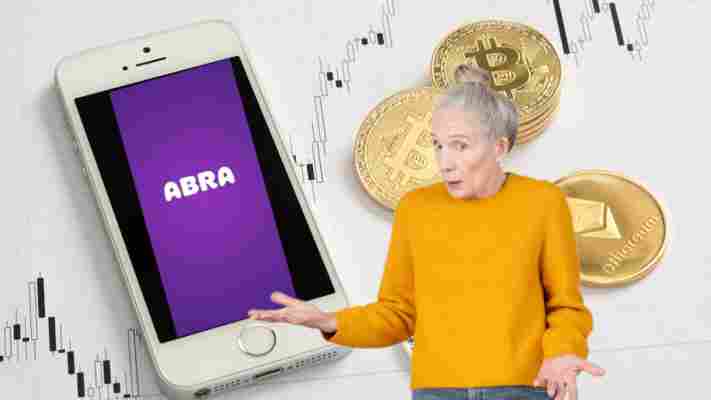Iberdrola, one of Spain’s main energy companies, has completed a blockchain pilot to track renewable energy more accurately than it ever could before – resulting in losses being slashed in half.

The trial was carried out in cooperation with Kutxabank, a bank with an equity shareholding in Iberdrola.
The energy giant used the Energy Web Foundation , an open-sourced and scalable blockchain solution to monitor the renewable energy delivered from two wind farms and one power station to the bank’s offices in the Basque Country and in Cordoba.
Iberdrola noted that this new system helped it save millions in resources:
A public company, Iberdrola employs more than 31,000 people in dozens of countries and its subsidiaries include Scottish Power, Avangrid, and Elektro Holding.
Abra finally treats its users as adults, lets them handle Ethereum directly
Yesterday, cryptocurrency wallet and services provider, Abra, announced that users can now purchase Ethereum through its Android and iOS apps. You’d be forgiven if you thought this was already the case, but it wasn’t. Let me explain.

With the new update, users can now add and withdraw actual Ethereum cryptocurrency to and from their Abra wallet. Before the update, any exposure to Ethereum on Abra was through one of its “ synthetic assets ,” which means you buy into the token without actually owning it.
Abra also sees this addition as the first step to streamline the “ process to add more ERC20 tokens in the near future,” the blog post reads . This appears to be a growing trend, in 2018 Coinbase doubled the number of tokens it offers.
Abra is very much seeing this addition as an entry point to its app for Ethereum holders. Once a user has Ethereum in the app, it can’t be used to invest in other assets, including 50 fiat currencies, 30 cryptocurrencies, and Abra’s proprietary “ BIT10 crypto index ” token.
Here’s the thing, only four of those 30 cryptocurrencies are supported natively: Bitcoin, Bitcoin Cash, Litecoin, and now, Ethereum. Investments in the other 26 are all based around Abra’s wildly complicated synthetic asset model .
Put simply, if you invest in one of these non-native cryptocurrencies in Abra, you are given simulated exposure to the coin in which your chosen digital asset is used to collateralize your investment. The value of your investment goes up and down in line with the value of the coin you invested in. It’s important to note that, in this case, you do not own the token; you can’t send the tokens to another wallet and you can’t use them to pay for things either.
Did you know? Hard Fork has its own stage at TNW2019 , our tech conference in Amsterdam. Check it out .
Exchanges form Crypto Rating Council, but pre-emptively admit its ratings mean nothing
A set of cryptocurrency firms have banded together to create a “ Crypto Rating Council ” to help classify digital assets — but it’s unlikely to mean much.

Founded by prominent exchanges like Coinbase, Bittrex, and Kraken, the group aims to rate digital assets from 1 to 5. Those that find themselves on the higher end of the scale are thought to be considered securities in the eyes of regulators.
“Whether a crypto asset is a security—as opposed to a currency, a commodity, or something else—may trigger registration, licensing, and other operating obligations for financial services firms that offer digital asset services like exchange, investment management, and trading,” reads the Council’s website.
Associated materials explain that US regulators rely on the Howey test to make that call. This typically considers investments to be securities if: there’s an expectation of profits, they’re made in a common enterprise (such as pooling collectively for an initial coin offering ), and any profits generated from those efforts are the result of a promoter or third party (like a company).
For instance, the US Securities and Exchange Commission (SEC) has already warned Kik it considers its KIN token a security, partly because the company’s efforts directly dictate its value.
Bitcoin and Ethereum, though, aren’t securities . Their networks are heavily decentralized, so their value isn’t decided by the efforts of a single promoter or third party.
None of these Crypto Ratings can be acted upon, so why are we all here?
Ultimately, the group’s numbering system is to be used as a “compliance tool,” allowing the members a framework for reviewing digital assets so as not to unknowingly draw the attention of the SEC.
The big question is exactly how useful it’s going to be. The group promises that legal and technical experts will help determine the rankings, but curiously, the Council pre-emptively admits they don’t really mean anything.
“The framework is the Council’s attempt to provide a consistent analysis which the members find useful but it is not legal advice and does not reflect the opinion of any member or outside counsel of whether any given asset is a security,” reads the Council’s FAQ .
“We publish the score as a reference and to encourage continued discussion among operators, developers, and regulators about the application of securities laws to crypto assets, but the Council’s understanding of the facts could be wrong and our analysis may not accurately reflect the law,” it adds, before urging the public to not rely on the scores for any legal purpose.
So, what’s the point, besides virtue signalling and clever marketing?
Want more Hard Fork? Join us in Amsterdam on October 15-17 to discuss blockchain and cryptocurrency with leading experts.











